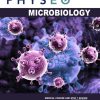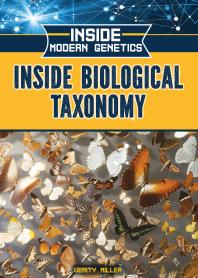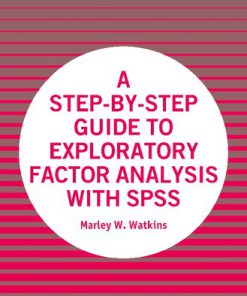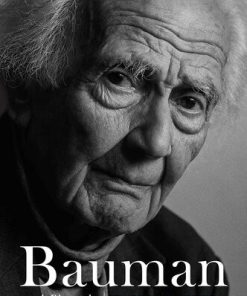Microbiology with Diseases by Taxonomy 6th Edition by Robert W Bauman ISBN 9780134832302 0135174708
$50.00 Original price was: $50.00.$25.00Current price is: $25.00.
Microbiology with Diseases by Taxonomy 6th Edition by Robert W Bauman – Ebook PDF Instant Download/Delivery: 9780134832302 ,0135174708
Full download Microbiology with Diseases by Taxonomy 6th Edition after payment

Product details:
ISBN 10: 0135174708
ISBN 13: 9780134832302
Author: Robert W Bauman
Microbiology with Diseases by Taxonomy 6th Edition Table of contents:
1 A Brief History of Microbiology
The Early Years of Microbiology
What Does Life Really Look Like?
Learning Outcomes
How Can Microbes Be Classified?
Learning Outcomes
Bacteria and Archaea
Fungi
Protozoa
Algae
Other Organisms of Importance to Microbiologists
The Golden Age of Microbiology
Learning Outcomes
Does Microbial Life Spontaneously Generate?
Learning Outcomes
Redi’s Experiments
Needham’s Experiments
Spallanzani’s Experiments
Pasteur’s Experiments
The Scientific Method
What Causes Fermentation?
Learning Outcomes
Pasteur’s Experiments
Buchner’s Experiments
What Causes Disease?
Learning Outcomes
Koch’s Experiments
Koch’s Postulates
Gram’s Stain
How Can We Prevent Infection and Disease?
Learning Outcomes
Semmelweis and Hand Washing
Lister’s Antiseptic Technique
Nightingale and Nursing
Snow and Epidemiology
Jenner’s Vaccine
Ehrlich’s “Magic Bullets”
The Modern Age of Microbiology
Learning Outcome
What Are the Basic Chemical Reactions of Life?
How Do Genes Work?
Microbial Genetics
Molecular Biology
Recombinant DNA Technology
Gene Therapy
What Roles Do Microorganisms Play in the Environment?
Learning Outcome
How Do We Defend Against Disease?
What Will the Future Hold?
Chapter Summary
The Early Years of Microbiology (pp. 2–7)
The Golden Age of Microbiology (pp. 7–18)
The Modern Age of Microbiology (pp. 18–22)
Questions for Review
Multiple Choice
Fill in the Blanks
Short Answer
Matching
Visualize It!
Critical Thinking
Concept Mapping
2 The Chemistry of Microbiology
Atoms
Learning Outcome
Atomic Structure
Learning Outcomes
Isotopes
Learning Outcome
Electron Configurations
Learning Outcome
Chemical Bonds
Learning Outcomes
Nonpolar Covalent Bonds
Learning Outcomes
Polar Covalent Bonds
Learning Outcome
Ionic Bonds
Learning Outcomes
Hydrogen Bonds
Learning Outcome
Chemical Reactions
Learning Outcome
Synthesis Reactions
Learning Outcomes
Decomposition Reactions
Learning Outcome
Exchange Reactions
Learning Outcome
Water, Acids, Bases, and Salts
Water
Learning Outcome
Acids and Bases
Learning Outcome
Salts
Organic Macromolecules
Functional Groups
Learning Outcome
Lipids
Learning Outcomes
Fats
Phospholipids
Waxes
Steroids
Carbohydrates
Learning Outcome
Monosaccharides
Disaccharides
Polysaccharides
Proteins
Learning Outcomes
Amino Acids
Peptide Bonds
Protein Structure
Nucleotides and Nucleic Acids
Learning Outcomes
Nucleotides and Nucleosides
Nucleic Acid Structure
Nucleic Acid Function
ATP (Adenosine Triphosphate)
Chapter Summary
Atoms (pp. 28–31)
Chemical Bonds (pp. 31–35)
Chemical Reactions (pp. 35–37)
Water, Acids, Bases, and Salts (pp. 37–40)
Organic Macromolecules (pp. 40–53)
Questions for Review
Multiple Choice
Fill in the Blanks
Visualize It!
Short Answer
Critical Thinking
Concept Mapping
3 Cell Structure and Function
Processes of Life
Learning Outcome
Prokaryotic and Eukaryotic Cells: An Overview
Learning Outcome
External Structures of Bacterial Cells
Glycocalyces
Learning Outcomes
Flagella
Learning Outcomes
Structure
Arrangement
Function
Fimbriae and Pili
Learning Outcome
Bacterial Cell Walls
Learning Outcomes
Gram-Positive Bacterial Cell Walls
Learning Outcome
Gram-Negative Bacterial Cell Walls
Learning Outcome
Bacteria Without Cell Walls
Bacterial Cytoplasmic Membranes
Structure
Learning Outcomes
Function
Learning Outcomes
Passive processes
Diffusion
Facilitated Diffusion
Osmosis
Active Processes
Active Transport
Group Translocation
Cytoplasm of Bacteria
Learning Outcomes
Cytosol
Inclusions
Endospores
Nonmembranous Organelles
Learning Outcome
Ribosomes
Cytoskeleton
External Structures of Archaea
Glycocalyces
Learning Outcome
Flagella
Learning Outcomes
Fimbriae and Hami
Learning Outcomes
Archaeal Cell Walls and Cytoplasmic Membranes
Learning Outcomes
Cytoplasm of Archaea
Learning Outcome
External Structure of Eukaryotic Cells
Glycocalyces
Learning Outcome
Eukaryotic Cell Walls and Cytoplasmic Membranes
Learning Outcomes
Cytoplasm of Eukaryotes
Learning Outcomes
Flagella
Learning Outcome
Structure and Arrangement
Function
Cilia
Learning Outcomes
Other Nonmembranous Organelles
Learning Outcomes
Ribosomes
Cytoskeleton
Centrioles and Centrosome
Membranous Organelles
Learning Outcomes
Nucleus
Endoplasmic Reticulum
Golgi Body
Lysosomes, Peroxisomes, Vacuoles, and Vesicles
Mitochondria
Chloroplasts
Endosymbiotic Theory
Learning Outcomes
Chapter Summary
Processes of Life (p. 59)
Prokaryotic and Eukaryotic Cells: An Overview (pp. 59–61)
External Structures of Bacterial Cells (pp. 62–66)
Bacterial Cell Walls (pp. 66–69)
Bacterial Cytoplasmic Membranes (pp. 69–74)
Cytoplasm of Bacteria (pp. 74–77)
External Structures of Archaea (pp. 77–78)
Archaeal Cell Walls and Cytoplasmic Membranes (p. 78-79)
Cytoplasm of Archaea (pp. 79–80)
External Structure of Eukaryotic Cells (p. 80)
Eukaryotic Cell Walls and Cytoplasmic Membranes (pp. 80–82)
Cytoplasm of Eukaryotes (pp. 82–89)
Questions For Review
Multiple Choice
Matching
Visualize It!
Short Answer
Critical Thinking
Concept Mapping
4 Microscopy, Staining, and Classification
Units of Measurement
Learning Outcomes
Microscopy
Learning Outcome
General Principles of Microscopy
Learning Outcomes
Wavelength of Radiation
Magnification
Resolution
Contrast
Light Microscopy
Learning Outcomes
Bright-Field Microscopes
Simple Microscopes
Compound Microscopes
Dark-Field Microscopes
Phase Microscopes
Phase-Contrast Microscopes
Differential Interference Contrast Microscopes
Fluorescence Microscopes
Confocal Microscopes
Electron Microscopy
Learning Outcome
Transmission Electron Microscopes
Scanning Electron Microscopes
Probe Microscopy
Learning Outcome
Scanning Tunneling Microscopes
Atomic Force Microscopes
Staining
Preparing Specimens for Staining
Learning Outcome
Principles of Staining
Learning Outcome
Simple Stains
Learning Outcome
Differential Stains
Gram Stain
Acid-Fast Stain
Endospore Stain
Histological Stains
Special Stains
Negative (Capsule) Stain
Flagellar Stain
Staining for Electron Microscopy
Learning Outcome
Classification and Identification of Microorganisms
Learning Outcome
Linnaeus and Taxonomic Categories
Learning Outcomes
Domains
Learning Outcome
Taxonomic and Identifying Characteristics
Learning Outcome
Physical Characteristics
Biochemical Tests
Serological Tests
Phage Typing
MALDI-TOF Mass Spectrometry
Analysis of Nucleic Acids
Taxonomic Keys
Chapter Summary
Units of Measurement (p. 97)
Microscopy (pp. 97–106)
Staining (pp. 106–112)
Classification and Identification of Microorganisms (pp. 112–119)
Questions For Review
Multiple Choice
Fill in the Blanks
Visualize It!
Short Answer
Critical Thinking
Concept Mapping
5 Microbial Metabolism
Basic Chemical Reactions Underlying Metabolism
Catabolism and Anabolism
Learning Outcome
Oxidation and Reduction Reactions
Learning Outcome
ATP Production and Energy Storage
Learning Outcome
The Roles of Enzymes in Metabolism
Learning Outcomes
Naming and Classifying Enzymes
The Makeup of Enzymes
Enzyme Activity
Temperature
pH
Enzyme and Substrate Concentration
Control of Enzymatic Activity
Carbohydrate Catabolism
Learning Outcome
Glycolysis
Cellular Respiration
Learning Outcomes
Synthesis of Acetyl-CoA
The Citric Acid (Krebs) Cycle
Electron Transport
Chemiosmosis
Metabolic Diversity
Learning Outcomes
Fermentation
Learning Outcomes
Other Catabolic Pathways
Lipid Catabolism
Learning Outcome
Protein Catabolism
Learning Outcome
Photosynthesis
Learning Outcome
Chemicals and Structures
Learning Outcome
Light-Dependent Reactions
Learning Outcomes
Cyclic Photophosphorylation
Noncyclic Photophosphorylation
Light-Independent Reactions
Learning Outcomes
Other Anabolic Pathways
Learning Outcome
Carbohydrate Biosynthesis
Learning Outcome
Lipid Biosynthesis
Learning Outcome
Amino Acid Biosynthesis
Learning Outcome
Nucleotide Biosynthesis
Learning Outcome
Integration and Regulation of Metabolic Functions
Learning Outcomes
Chapter Summary
Basic Chemical Reactions Underlying Metabolism (pp. 125–133)
Carbohydrate Catabolism (pp. 133–142)
Other Catabolic Pathways (pp. 142–144)
Photosynthesis (pp. 144–149)
Other Anabolic Pathways (pp. 149–151)
Integration and Regulation of Metabolic Functions (pp. 151–153)
Questions For Review
Multiple Choice
Matching
Fill in the Blanks
Visualize It!
Short Answer
Critical Thinking
Concept Mapping
6 Microbial Nutrition and Growth
Growth Requirements
Nutrients: Chemical and Energy Requirements
Learning Outcomes
Sources of Carbon, Energy, and Electrons
Oxygen Requirements
Nitrogen Requirements
Other Chemical Requirements
Physical Requirements
Learning Outcome
Temperature
pH
Physical Effects of Water
Osmotic Pressure
Hydrostatic Pressure
Associations and Biofilms
Learning Outcome
Culturing Microorganisms
Clinical Sampling
Learning Outcome
Obtaining Pure Cultures
Learning Outcome
Streak Plates
Pour Plates
Other Isolation Techniques
Culture Media
Learning Outcomes
Defined Media
Complex Media
Selective Media
Enrichment Culture
Differential Media
Anaerobic Media
Transport Media
Special Culture Techniques
Learning Outcome
Animal and Cell Culture
Low-Oxygen Culture
Preserving Cultures
Learning Outcome
Growth of Microbial Populations
Learning Outcome
Generation Time
Learning Outcome
Mathematical Considerations in Population Growth
Learning Outcome
Phases of Microbial Population Growth
Learning Outcomes
Lag Phase
Log Phase
Stationary Phase
Death Phase
Continuous Culture in a Chemostat
Learning Outcome
Measuring Microbial Reproduction
Learning Outcome
Direct Methods Not Requiring Incubation
Microscopic Counts
Electronic Counters
Direct Methods Requiring Incubation
Serial Dilution and Viable Plate Counts
Membrane Filtration
Most Probable Number
Indirect Methods
Turbidity
Metabolic Activity
Dry Weight
Molecular Methods
Chapter Summary
Growth Requirements (pp. 162–171)
Culturing Microorganisms (pp. 171–179)
Growth of Microbial Populations (pp. 179–187)
Questions For Review
Multiple Choice
Fill in the Blanks
Visualize It!
Short Answer
Critical Thinking
Concept Mapping
7 Microbial Genetics
The Structure and Replication of Genomes
Learning Outcome
The Structure of Nucleic Acids
Learning Outcome
The Structure of Prokaryotic Genomes
Learning Outcomes
Prokaryotic Chromosomes
Plasmids
The Structure of Eukaryotic Genomes
Learning Outcome
Nuclear Chromosomes
Extranuclear Chromosomes in Eukaryotes
DNA Replication
Learning Outcomes
Initial Processes in Bacterial DNA Replication
Continual Synthesis of the Leading Strand
Fragmented Synthesis of the Lagging Strand
Other Characteristics of Bacterial DNA Replication
Replication of Eukaryotic DNA
Gene Function
The Relationship Between Genotype and Phenotype
Learning Outcome
The Transfer of Genetic Information
Learning Outcome
The Events in Transcription
Learning Outcomes
Initiation of Transcription
Elongation of the RNA Transcript
Termination of Transcription
Self-Termination
Rho-Dependent Termination
Transcriptional Differences in Eukaryotes
Translation
Learning Outcomes
The Genetic Code
Participants in Translation
Messenger RNA
Transfer RNA
Ribosomes and Ribosomal RNA
Events in Translation
Initiation
Elongation
Termination
Translational Differences in Eukaryotes
Regulation of Genetic Expression
Learning Outcomes
The Nature of Prokaryotic Operons
The Lactose Operon, an Inducible Operon
Positive Regulation by CAP
Repression and Induction
The Tryptophan Operon, a Repressible Operon
RNA Molecules Can Control Translation
Mutations of Genes
Learning Outcome
Types of Mutations
Learning Outcome
Effects of Point Mutations
Learning Outcome
Mutagens
Learning Outcomes
Radiation
Chemical Mutagens
Nucleotide Analogs
Nucleotide-Altering Chemicals
Frameshift Mutagens
Frequency of Mutation
Learning Outcome
DNA Repair
Learning Outcome
Direct Repair
Single-Strand Repair
Error-Prone Repair
Identifying Mutants, Mutagens, and Carcinogens
People also search for Microbiology with Diseases by Taxonomy 6th Edition:
microbiology with diseases by body system 4 e
bauman robert microbiology with diseases by taxonomy
robert bauman microbiology with diseases by body system
is microbiology dangerous
microbiology with diseases by body system robert bauman
Tags: Robert W Bauman, Diseases, Taxonomy, Microbiology
You may also like…
Biology and other natural sciences - Biology
Mathematics
A Step by Step Guide to Exploratory Factor Analysis with SPSS 1st Edition Marley W Watkins
Commercial & Financial Law
Exam Pro on Torts (Objective) 3rd Edition John H.. Eades Bauman (Ronald W.)
Mathematics - Applied Mathematics
Biology and other natural sciences - Zoology
Vertebrate Biology Systematics Taxonomy Natural History and Conservation 3rd Edition Donald W Linzey
Education Studies & Teaching - Education - General & Miscellaneous
Uncategorized
Medicine - Infectious diseases











